COVID-19 update: Case numbers steady but hospitalizations up, more vaxxed patients than not
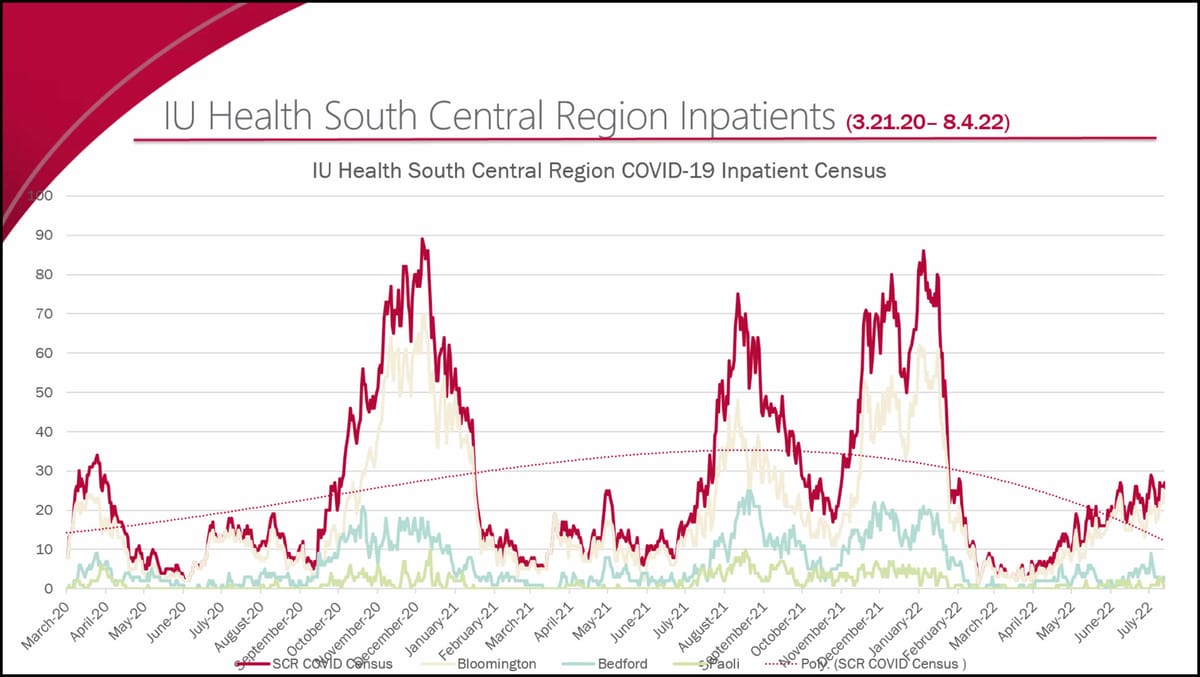
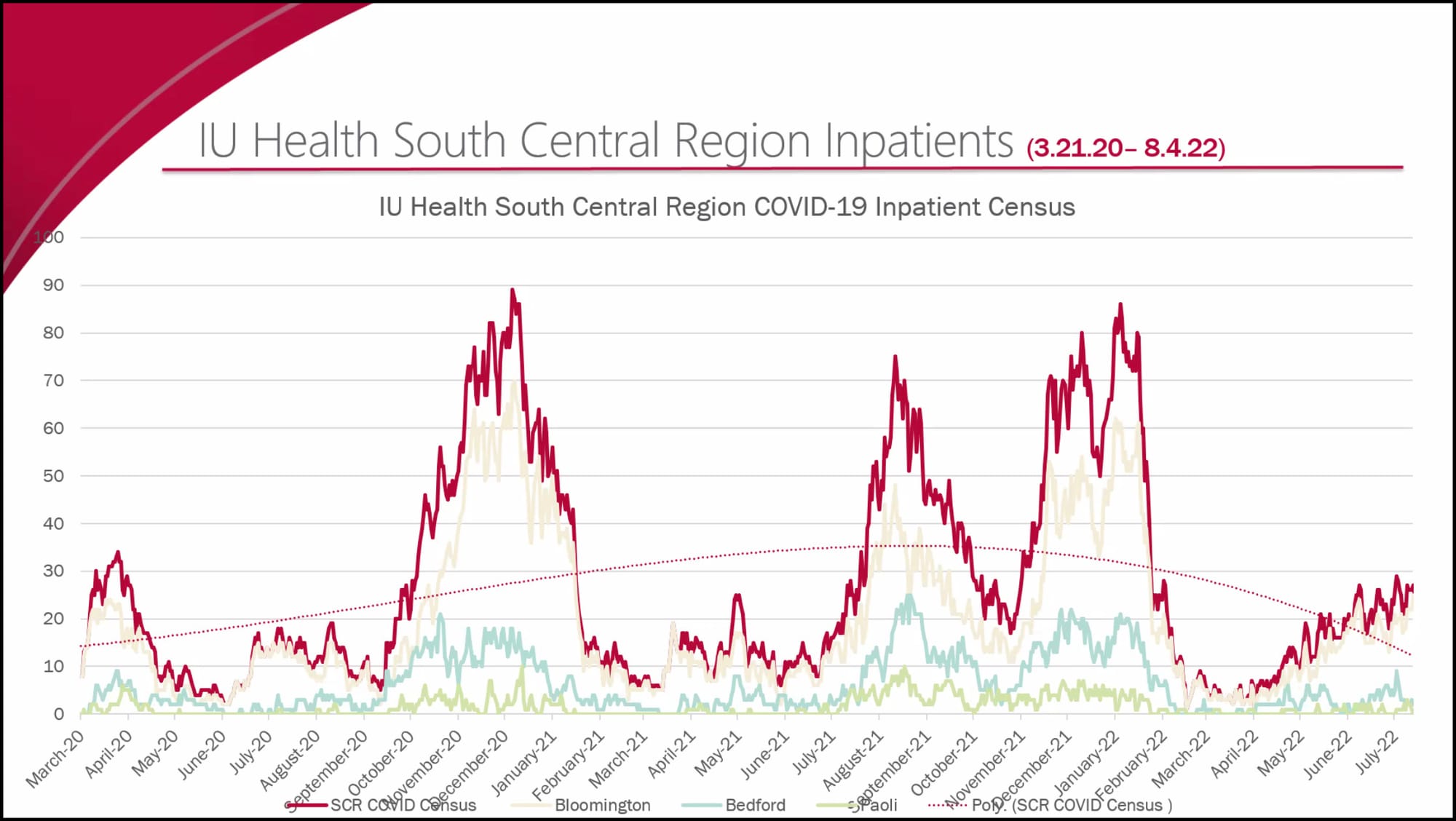
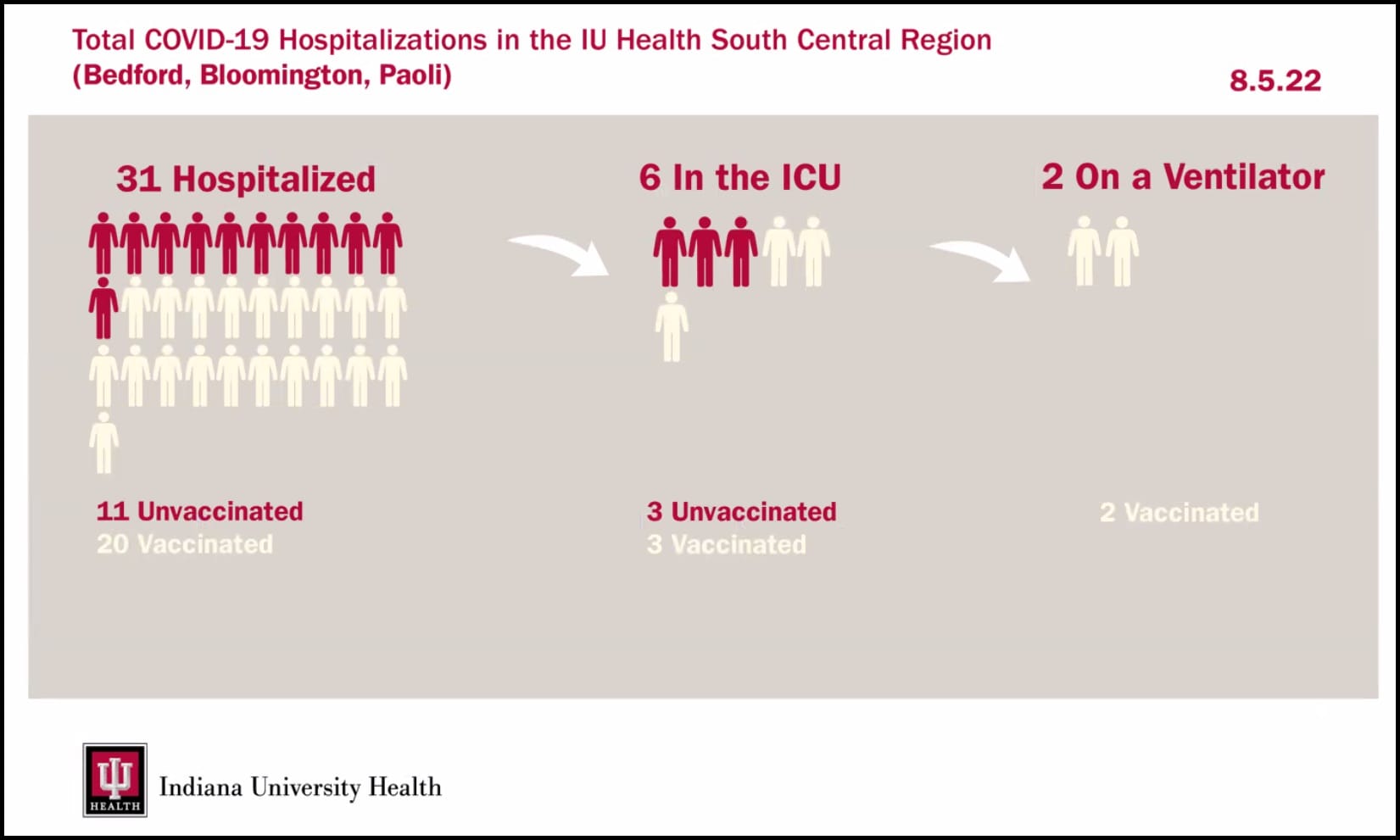
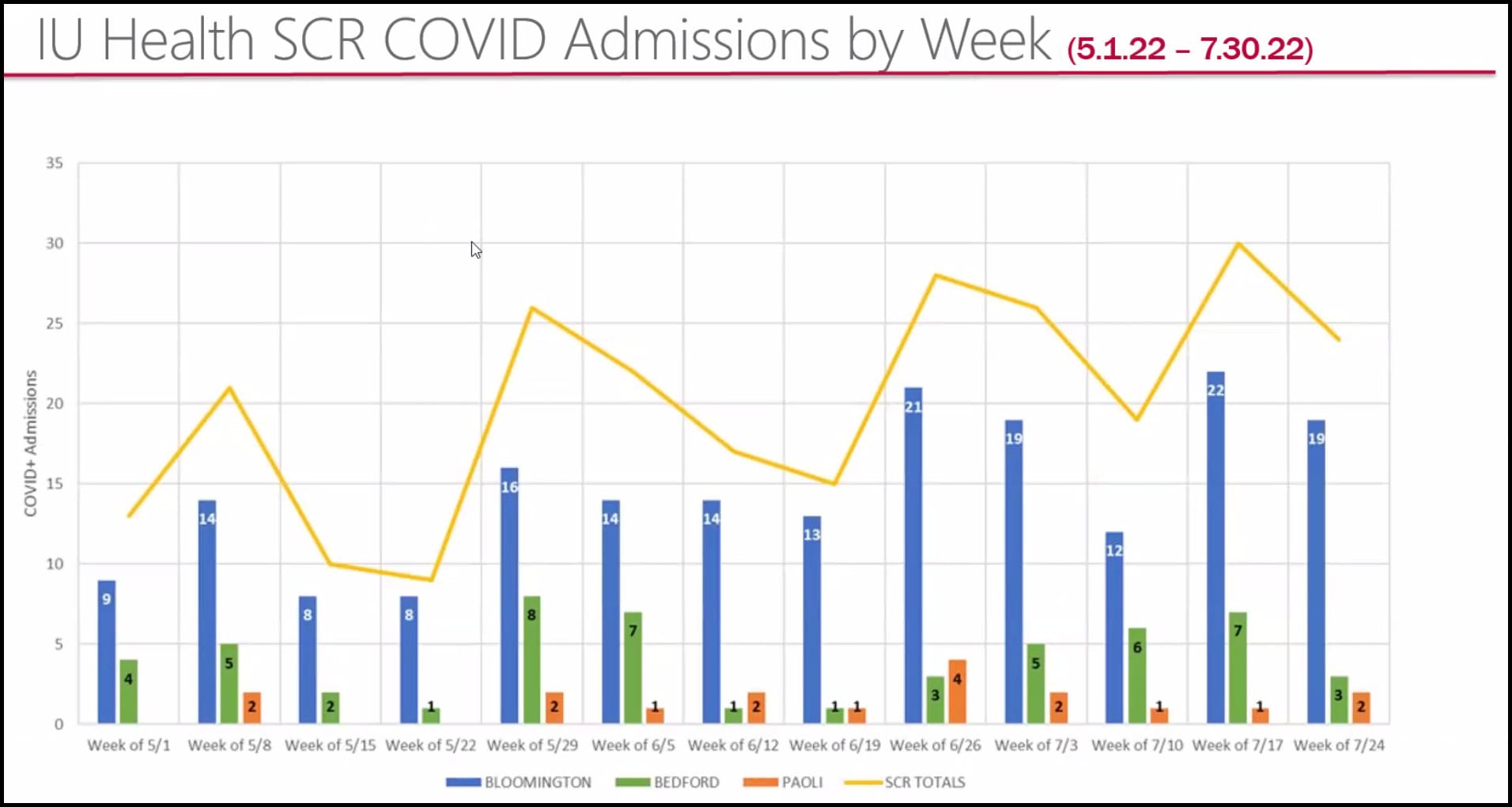
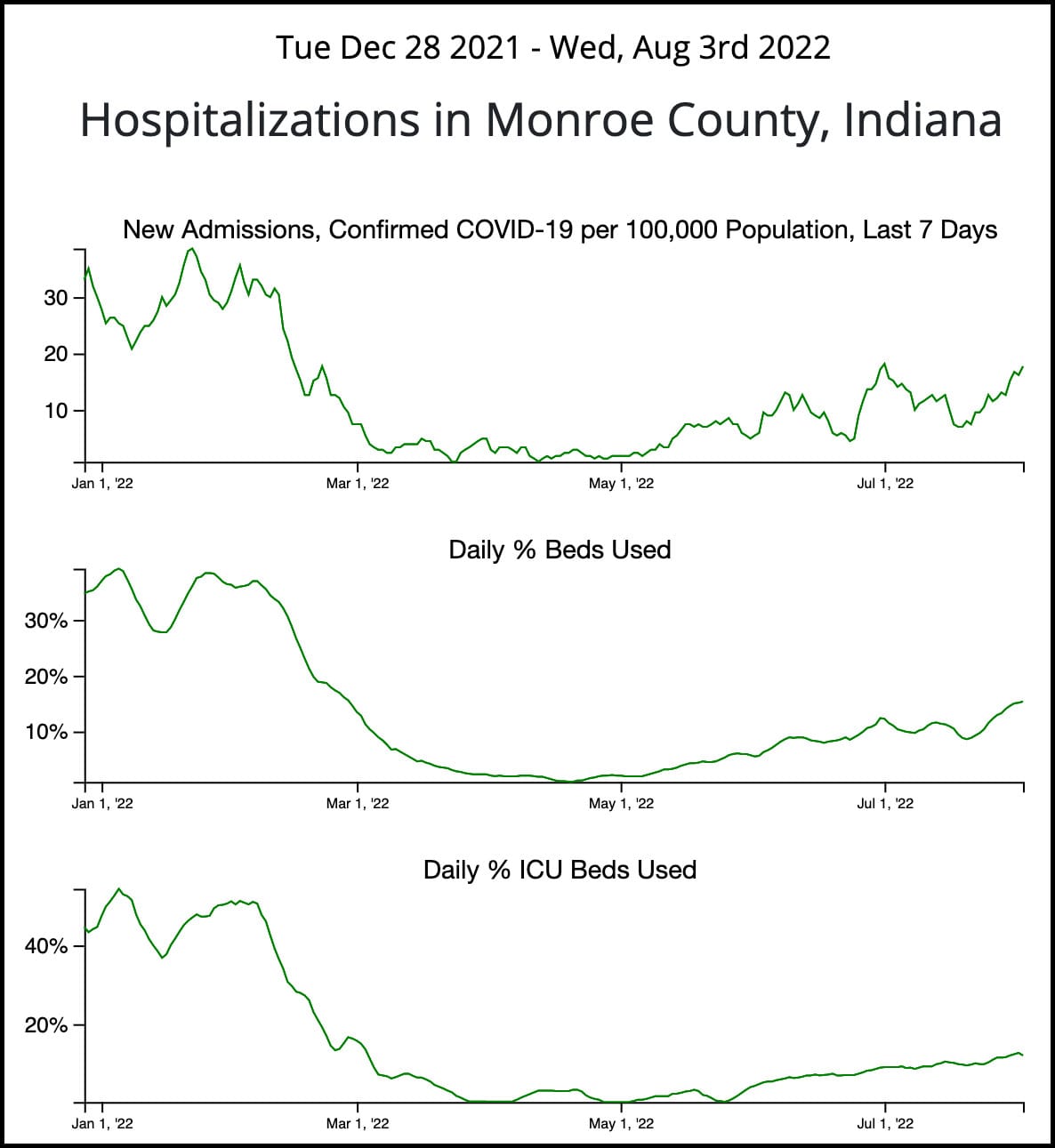
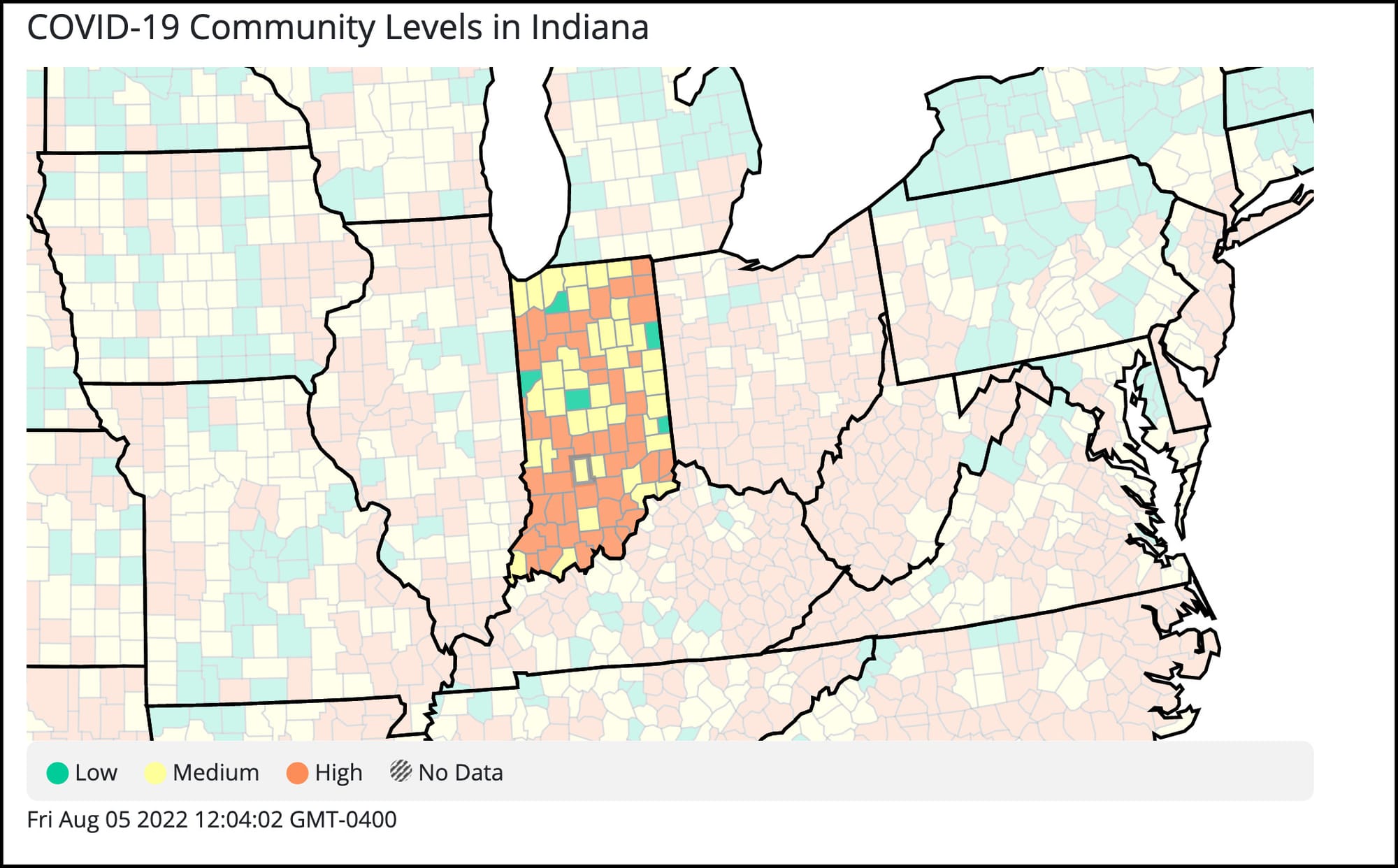
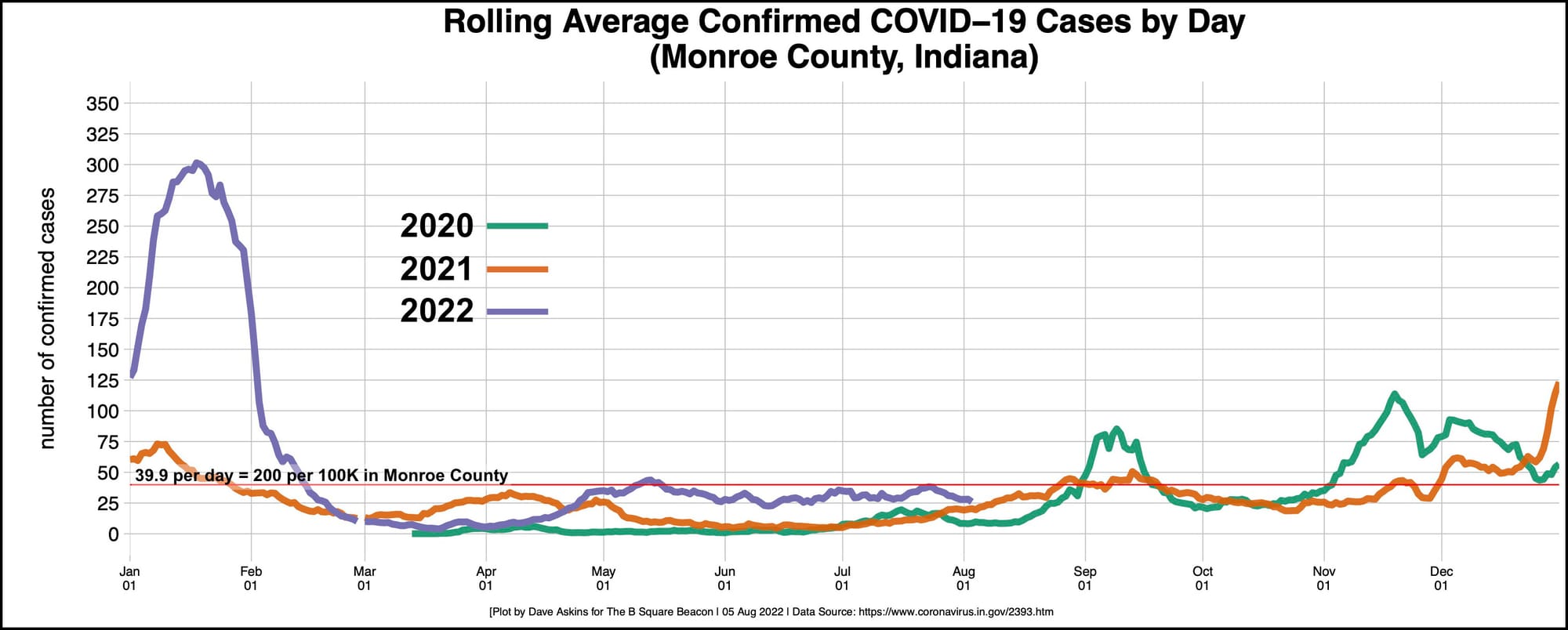
Friday’s news conference of leaders in the Bloomington area is one indicator that the local spread of COVID-19 virus is up.
It was the first such news conference since March, a time when IU Health south central region president Brian Shockney described a “sense of calm” after two years of pandemic.
At the time, just two patients at IU Health south central region hospitals had diagnoses for COVID-19.
On Friday, Shockney reported a total of 31 patients who were diagnosed with the virus at IU Health’s hospitals in Bloomington, Bedford and Paoli.
Shockney said, “Over the last 90 days, we have seen a continued increase in our inpatients.” He added, “With the workforce shortages across the state, and nation along with the highly complex care that our patients require, it’s difficult to provide care for all those who need it.”
The number of cases has remained pretty steady for the last three months and would qualify as “low” community spread under the Centers for Disease Control (CDC) categories.
But the number of hospitalizations has pushed Monroe County to the CDC “medium” level of community spread.
The rolling average case numbers have stayed in a range between 25 and 40 cases. Case numbers above 40 a day for Monroe County would alone push the CDC level to “medium.”
It’s the 16.2 new COVID-19 admissions per 100,000 population that has pushed Monroe County to the CDC’s “medium” category. The 14.1 percent of staffed inpatient beds that are in use by patients with confirmed COVID-19 also puts Monroe County in the “medium” category.
Compared to a year ago, the vaccination profile of hospitalized patients has now flipped—from more patients who were unvaccinated to more who are vaccinated. Of the 31 patients now in the hospital, all but 11 were vaccinated, Shockney reported. That’s about 65 percent of patients who are vaccinated.
In Monroe County, according to the CDC, 53 percent of the population is fully vaccinated with a first booster dose.
About the significance of the vaccination rates among patients, Shockney said the existing vaccines are not directly targeted for the current variants of the virus that are spreading. He is looking to new vaccines in the fall that are “tweaked” to target the variants that are spreading now.
Shockney said, “The vaccine is still important, number one, to build up our immunity.” One of the reasons for that day’s news conference, after a long hiatus, was to raise awareness: “Even if you’re vaccinated, the spread of this virus is increasing across our communities. And we need to protect ourselves.”
At Friday’s news conference Indiana University’s health officer Aaron Carroll said, “Someday, in an ideal world, 100 percent of people who get COVID will be vaccinated, because everyone will be vaccinated.” He added, “We shouldn’t let that convince us that vaccines don’t work.”
If the newer variants are able to spread to people with vaccines, they have one attribute that makes them easier to manage, from a public health policy perspective, according to Carroll. That attribute: They cause at least some symptoms in almost everyone. That means asymptomatic spread is less likely.
Carroll said that a big challenge with the basic virus—which was seen when the pandemic first hit—was preventing the spread of the virus from people who had no idea they were sick. Now, most people who have one of the current variants know they’re sick, even if the symptoms are mild.
That means instead of focusing on mask wearing, which is still encouraged, Carroll is focused on a different message: If you’re sick, stay home.
Carroll put it like this: “We’re begging people not to come to work, not to come to class, not to go out of the house, when they’re sick.”




Comments ()